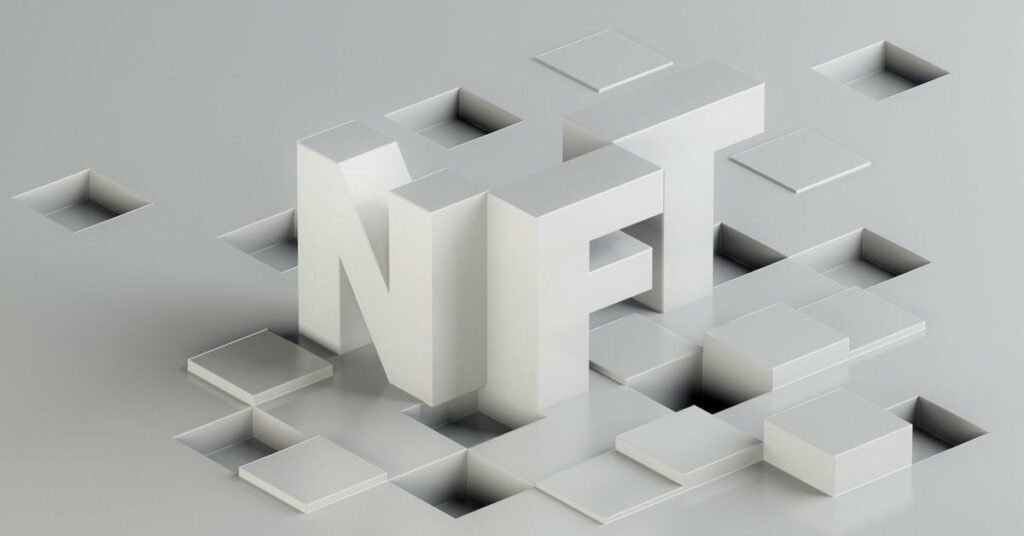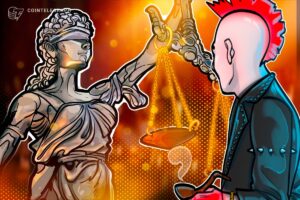Understanding NFTs: An Explanation and Overview of How They Function – Video

It’s time now for open forum on this segment, we take your questions from social media on any particular topic we go out into the world and we find answers for you. Remember, there are no dumb questions here. So if you have a question and you want us to find an answer for you, send me ad M on X and we’ll try to sort you out for this segment. We wanna thank Drear blockchain, research analyst Sarah Galis for helping us answer these questions. Let’s get right into it. All of the questions on today’s segment are about NFTS. The first one comes from walk in the clouds. They said I want to know more about how NFTS are applied to real world assets instead of pixel images walk in the clouds. NFTS definitely became popular through several PFP collections. But there are so many more sticky use cases for NFTS that folks are exploring right now. You hear us do interviews about them on the show all the time. Sarah told us that the applications of NFTS to real world assets represents a shift in how we tokenize and trade physical goods and rights. Let’s take a look at a few examples to help us understand this just a little bit more and let’s start with physical art. OK. Artists and galleries are using NFTS to certify the authenticity and ownership of physical art works. In these use cases. NFTS are linked to the piece and can provide details about the artworks origin previous owners and verify its authenticity. The same principle can be applied to any luxury item or collectible. The next use case we’re going to look at here is property titles and transactions. Yes, you heard me right. Even your house can be tokenized and that’s your physical house in the real world, not your digital house in the metaverse. Although that can also be tokenized. Sarah tells us that when real estate is tokenized, it can help simplify the process of buying selling and transferring property titles. The method even promises to reduce fraud and make property ownership more accessible. Now you might be asking how could it be more accessible? Well, if a home is tokenized, you can now own part of a home or a fractional share in a piece of real estate, making it more accessible to folks with different incomes, music and media rights is the last use case. We’re going to take a look at here. Musicians and content creators can use NFTS to sell rights to their work including songs, videos or other media. Let’s take Rihanna, for example, if she creates an NFT that represents ownership in one of her songs, every holder of that NFT could participate in the profits from that song over time. And now I told you that was the last example we were going to take a look at. But I couldn’t this one out tokenized securities, even stocks bonds and other traditional financial instruments can be represented as NFTS, mixing the old world with the new, this is similar to real estate and could potentially open up new markets and make these types of assets more accessible to a broader range of investors. I hope that answered your question. Walk in the clouds. Let’s move now to our next question. Sirpa Burt asks, can ts be freely transferred between different digital platforms without any restrictions or limitations? All right, NFTS can theoretically be transferred between different platforms, but the process is not always straightforward and can depend on a few things like compatibility between different blockchains platform or marketplace policies, smart contract stipulations and technical infrastructure to support the transfer. Sarah tells us that TS are typically created and bound to a specific Blockchain. So that means a Blockchain like Ethereum or Solana. If an NFT is created there, sometimes they can be bound to that ecosystem for the NFT to be transferable. Your NFT platform must support the same Blockchain network. Now, some platforms might have their own policies or limitations that restrict the transfer of the NFT outside of that ecosystem. Some reasons for this could be that there’s proprietary technology licensing agreements, intellectual property or a desire to maintain control over the assets traded within their platform. And smart contracts come into play. Now, the ability to transfer an NFT can also be limited by the parameters set by the smart contract that governs the NFT. A smart contract is something that lives on a Blockchain and sets the rules and parameters in which you can interact with an asset. Some NFTS could be designed with restrictions on transferability or might be only transferable when certain conditions are met. Sir. For, I hope that helped you. I hope you have a little bit of a better understanding on how when and if an NFT can be transferred. Let’s take a look at our next question. It’s from Barons Audrey. They asked, can someone explain how NFTS are created and what makes them unique and valuable compared to other digital assets? Ok. Let’s break this down. NFTS are created through a process called minting. This is where digital art or digital file is published on a Blockchain. As you recall, a Blockchain is the decentralized ledger that records all of the transactions of cryptocurrencies and other digital assets. Here’s how the process works. First, you select the Blockchain and ensure that it supports NFTS. Some examples include Ethereum Tasos or flow next, you prepare your digital file, so you get your photo, your video, your file, maybe your digital art ready. Then you choose the NFT marketplace that you want to mint your NFT on. So an example of an NFT marketplace is open sea minting. The NFT involves uploading the file, setting up the sales process. So this means deciding whether the sale is going to be at a fixed price or an auction and then you define the smart contract parameters. So for example, if you want to receive a royalty, every time the file is traded, you can stipulate that in your smart contract during the minting process, a unique smart contract is generated which makes the NFT distinguishable and provides information like ownership royalties and metadata. So what sets these tokens apart from other digital assets? It’s their non fung Fung il is when something can be exchanged for something else t…
Source link
#NFTs #Work #Video





